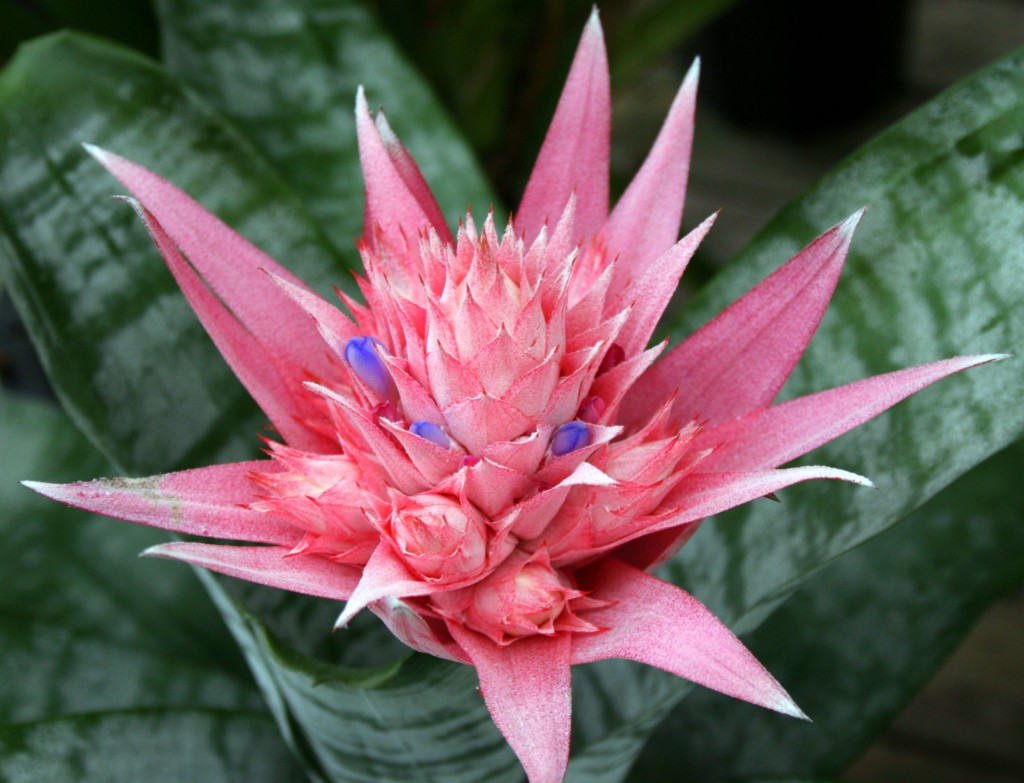
Home owners often put a lot of thought and care into exterior landscaping and gardening. But don’t forget to bring the outdoors in with beautiful and functional house plants. House plants can add attractive greenery, help you breathe better, and even purify the air. We’ve highlighted 32 of the best house plants you can choose, whether you’re looking for easy maintenance, air purifying, beauty, or are concerned with finding plants that aren’t dangerous for pets or children.
Best Houseplants for Easy Maintenance
Even home owners with a black thumb can keep certain house plants alive. These plants don’t require much in the way of watering or particular lighting and other conditions. They’re happy to grow in typical home temperatures and lighting without a whole lot of fuss, making your job as a plant owner easier — and keeping them alive without much care or thought.
- Jade plant:
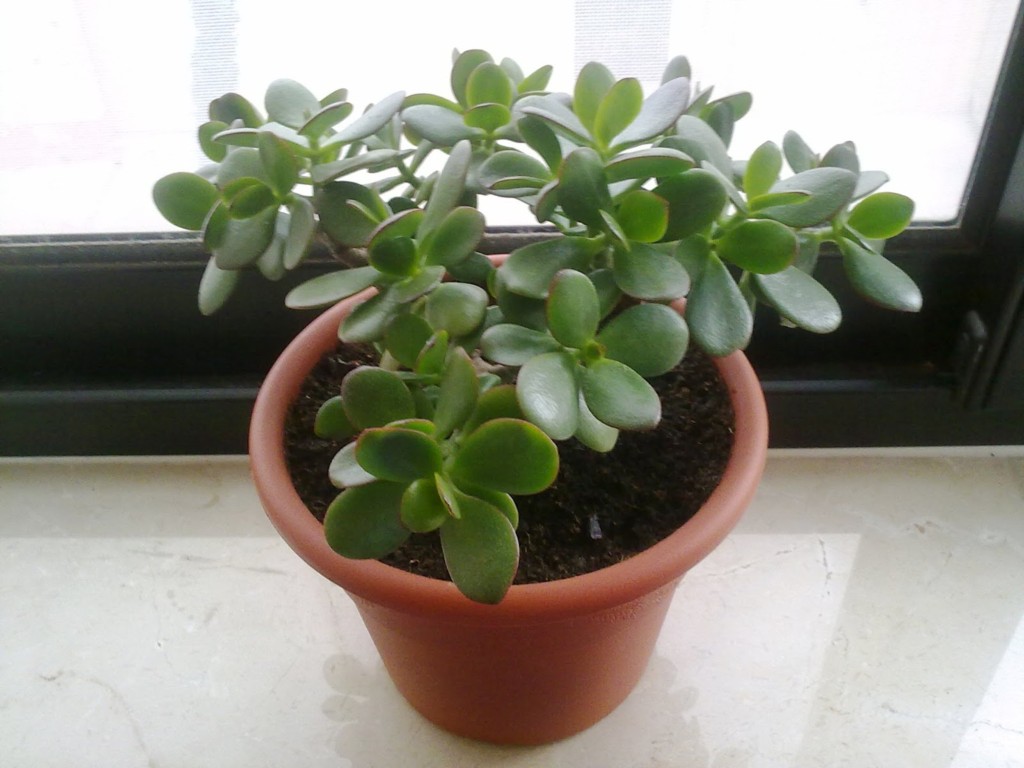 Jade plants offer the look of the succulent with an incredible ease of care. They grow slowly and don’t require a lot of water, though they do need bright light. But what makes the jade plant especially easy to care for is how well they do in ordinary room temperatures.
Jade plants offer the look of the succulent with an incredible ease of care. They grow slowly and don’t require a lot of water, though they do need bright light. But what makes the jade plant especially easy to care for is how well they do in ordinary room temperatures. - Bromeliad:
 Bromeliad plants offer a dramatic bloom and beautiful foliage. It’s a hardy, easy to grow plant that does well with good air circulation and humidity. It needs light, warmth, and regular watering.
Bromeliad plants offer a dramatic bloom and beautiful foliage. It’s a hardy, easy to grow plant that does well with good air circulation and humidity. It needs light, warmth, and regular watering. - Diffenbachia:
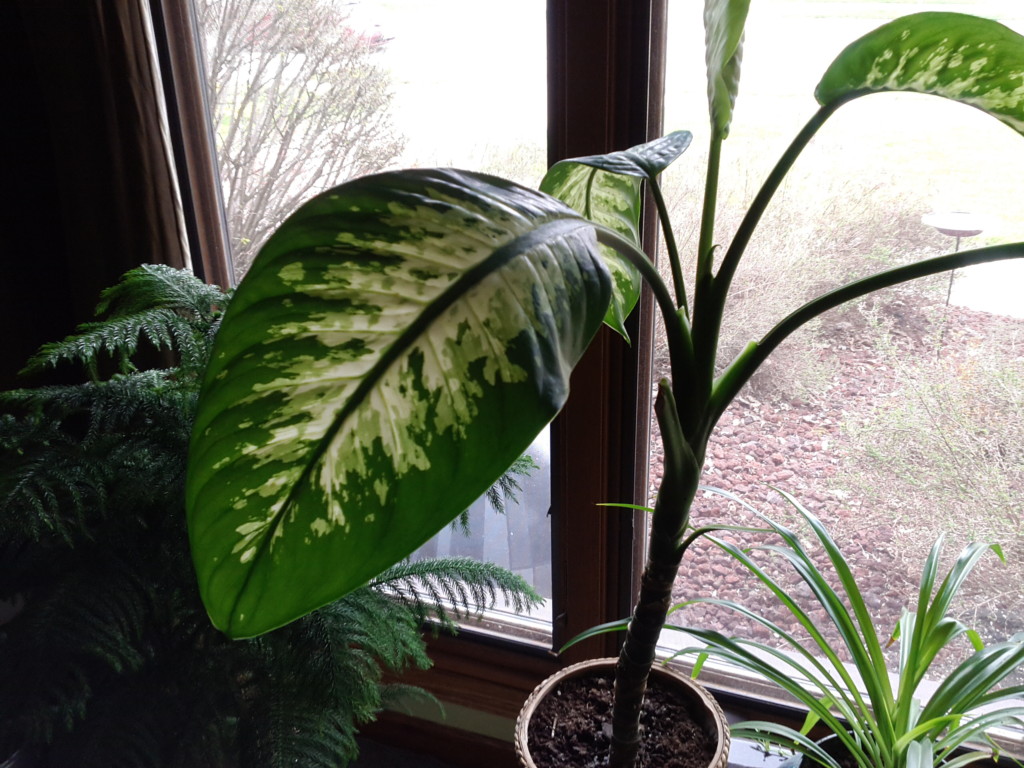 Diffenbachia plants thrive in normal room temperatures and medium to low lighting conditions. The soil just needs to be kept moist. Without a lot of care, the leaves of the diffenbachia can grow up to a foot long and have a tropical, cheery look.
Diffenbachia plants thrive in normal room temperatures and medium to low lighting conditions. The soil just needs to be kept moist. Without a lot of care, the leaves of the diffenbachia can grow up to a foot long and have a tropical, cheery look. - Sago palm:
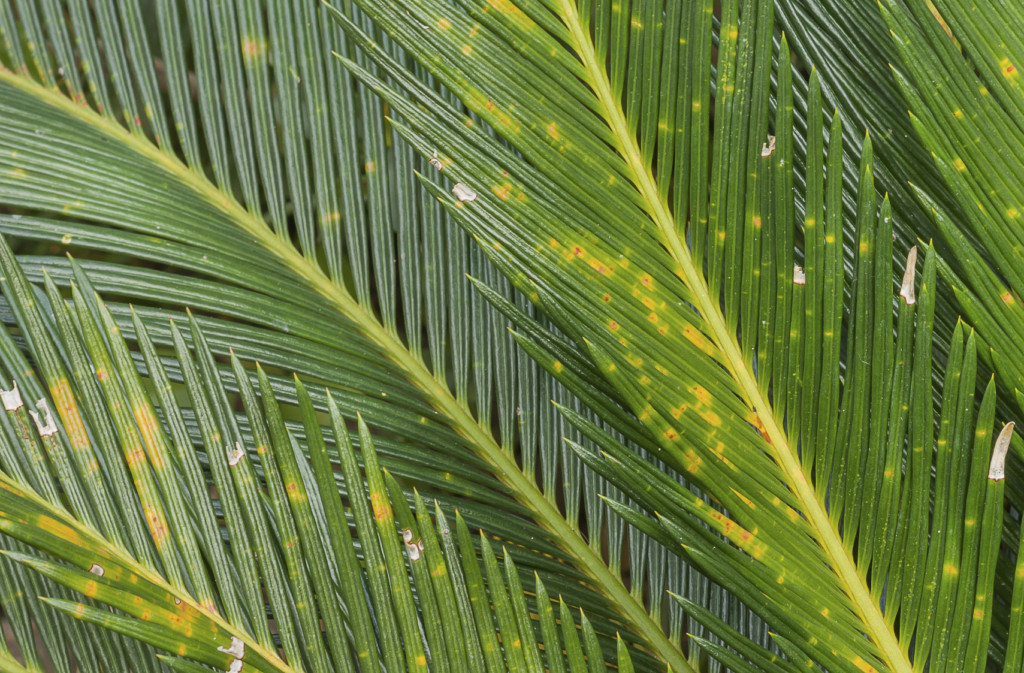 Sago palms are beautiful and incredibly easy to grow. They can thrive in any light and only require medium to low watering. However, they should be kept out of reach of pets and children, as they are poisonous.
Sago palms are beautiful and incredibly easy to grow. They can thrive in any light and only require medium to low watering. However, they should be kept out of reach of pets and children, as they are poisonous. - Shamrock plant:
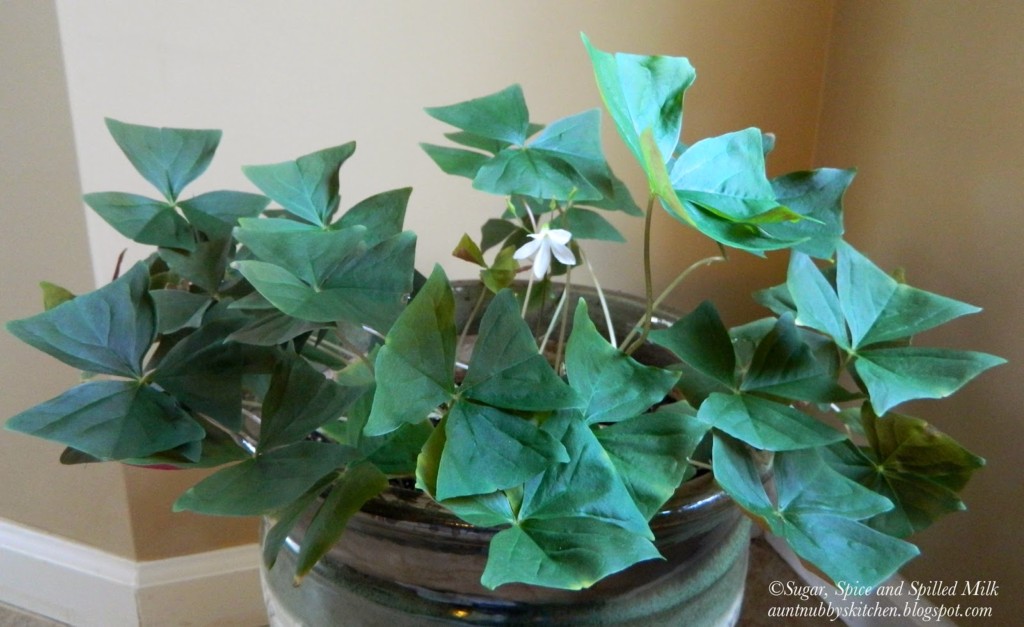 Shamrock plants are easy to grow and maintain. They like windows with indirect sunlight and only need to be watered about weekly. This plant has leaves shaped similar to a shamrock in colors of green, purple, red, and even in different combinations of the colors. They can also produce delicate flowers in white, pink, yellow, or red.
Shamrock plants are easy to grow and maintain. They like windows with indirect sunlight and only need to be watered about weekly. This plant has leaves shaped similar to a shamrock in colors of green, purple, red, and even in different combinations of the colors. They can also produce delicate flowers in white, pink, yellow, or red. - Areca palm:
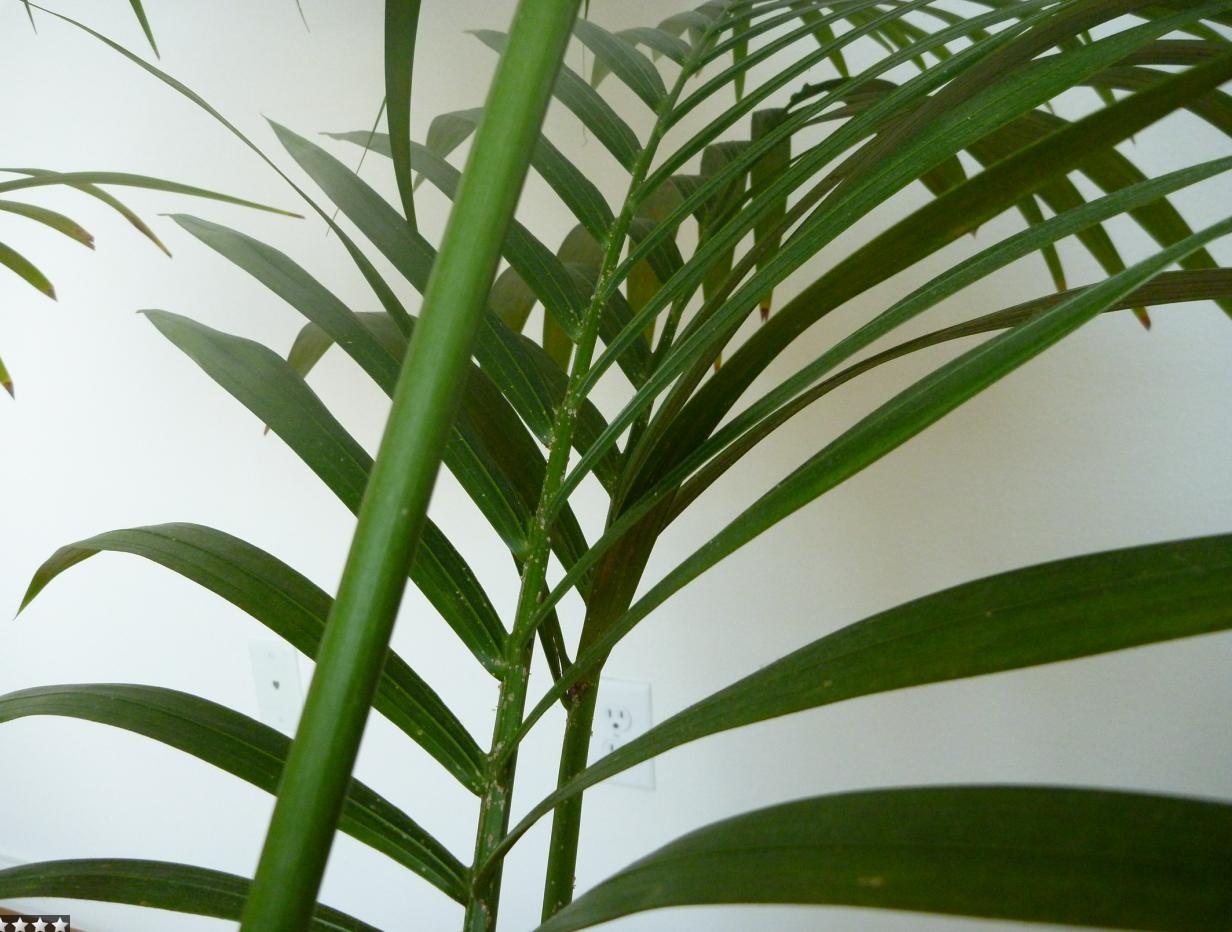 Areca palms offer a tropical look without a whole lot of work. They can grow to an impressive seven feet, though you can keep them smaller with a smaller pot. This plant thrives in indirect sunlight with occasional watering, only about every other week or so.
Areca palms offer a tropical look without a whole lot of work. They can grow to an impressive seven feet, though you can keep them smaller with a smaller pot. This plant thrives in indirect sunlight with occasional watering, only about every other week or so.
Best Houseplants for Air Quality and Purification
House plants can do more than just add greenery: they can clean the air in your home. Often, house plants with purifying abilities can remove chemicals like formaldehyde, benzene, and trichloroethylene. These chemicals are commonly found in household products, furniture, and more, so having house plants that can filter them out will make your home’s air healthier and easier to breathe.
- Aloe vera:
 Aloe vera is the ultimate houseplant for easy maintenance. It requires very little water, as it’s a desert plant. All you have to do is stick it in a sunny spot and give it water once a week or so. It will help monitor the air quality in your home, displaying brown spots when air becomes too full of chemicals. Aloe can also help clear the air, removing formaldehyde and benzene. Plus, aloe vera can be useful for burns, particularly sunburns. Simply slice it open to get the gel and rub it on affected areas.
Aloe vera is the ultimate houseplant for easy maintenance. It requires very little water, as it’s a desert plant. All you have to do is stick it in a sunny spot and give it water once a week or so. It will help monitor the air quality in your home, displaying brown spots when air becomes too full of chemicals. Aloe can also help clear the air, removing formaldehyde and benzene. Plus, aloe vera can be useful for burns, particularly sunburns. Simply slice it open to get the gel and rub it on affected areas. - Gerbera daisy:
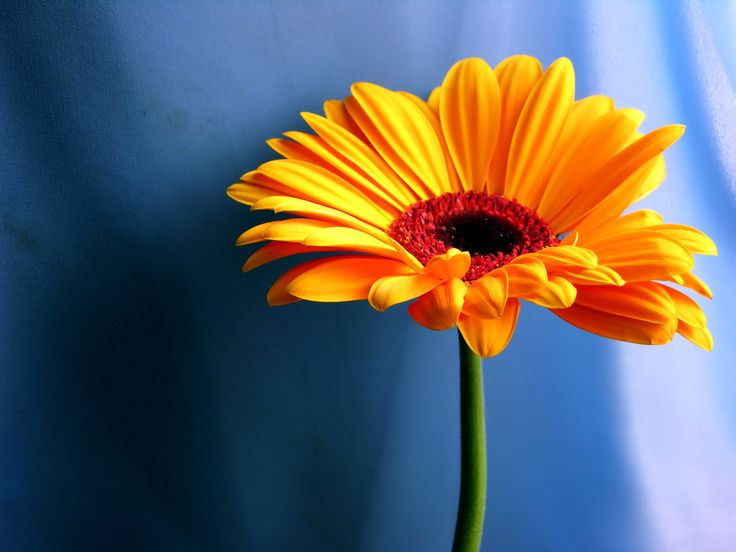 One of the most beautiful air clearing indoor plants available, the gerbera daisy is bright, cheery, and large. Gerbera daisies remove trichloroethylene, commonly found in dry cleaning, as well as benzene typically found in inks. This flowering houseplant should be given direct sunlight and leaves should be misted a couple times a week. They do best in pots with drainage holes.
One of the most beautiful air clearing indoor plants available, the gerbera daisy is bright, cheery, and large. Gerbera daisies remove trichloroethylene, commonly found in dry cleaning, as well as benzene typically found in inks. This flowering houseplant should be given direct sunlight and leaves should be misted a couple times a week. They do best in pots with drainage holes. - English ivy:
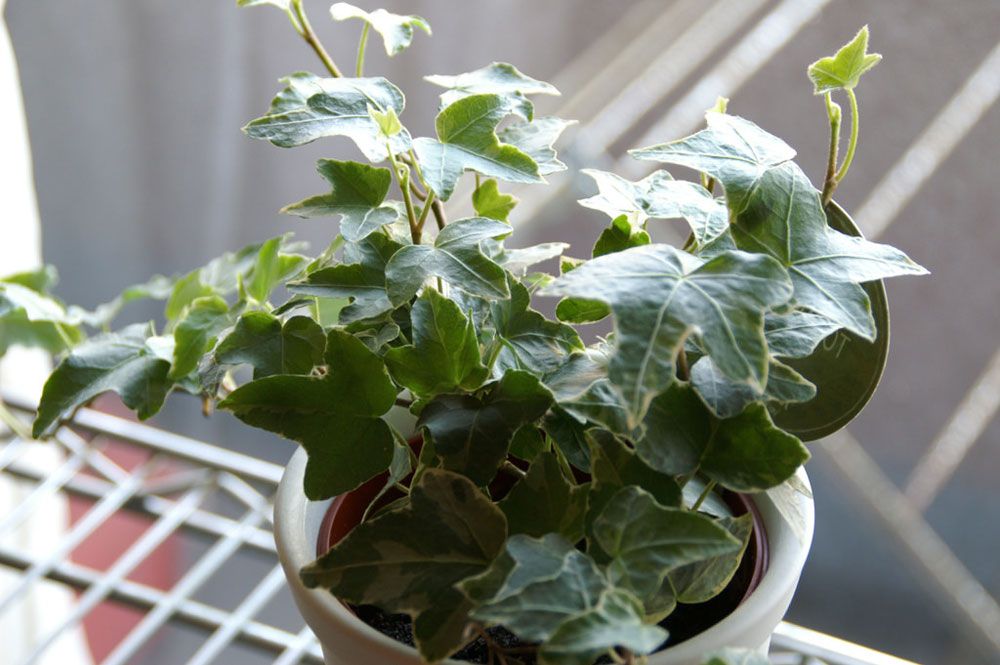 English ivy is the most effective plant for absorbing formaldehyde and airborne fecal matter particles in your home. It’s easy to grow and can be used as a hanging plant or floor plant. It just needs moderate temperatures and medium sunlight. Just be careful to keep it potted indoors, as English ivy is an aggressive plant that can easily take over if you let it run wild outside.
English ivy is the most effective plant for absorbing formaldehyde and airborne fecal matter particles in your home. It’s easy to grow and can be used as a hanging plant or floor plant. It just needs moderate temperatures and medium sunlight. Just be careful to keep it potted indoors, as English ivy is an aggressive plant that can easily take over if you let it run wild outside. - Peace lily:
 Peace lilies are a popular indoor plant for their beauty and indoor cleaning abilities. The peace lily can break down and neutralize benzene, formaldehyde, and carbon monoxide. Peace lilies do best with medium indirect sunlight and watering when the surface of the soil is almost dry. This plant is easy to maintain because it tells you when it needs water by drooping. Be careful placing a peace lily in your home with pets or children, as it can cause skin irritation, stomach discomfort, and other minor side effects.
Peace lilies are a popular indoor plant for their beauty and indoor cleaning abilities. The peace lily can break down and neutralize benzene, formaldehyde, and carbon monoxide. Peace lilies do best with medium indirect sunlight and watering when the surface of the soil is almost dry. This plant is easy to maintain because it tells you when it needs water by drooping. Be careful placing a peace lily in your home with pets or children, as it can cause skin irritation, stomach discomfort, and other minor side effects. - Golden pothos:
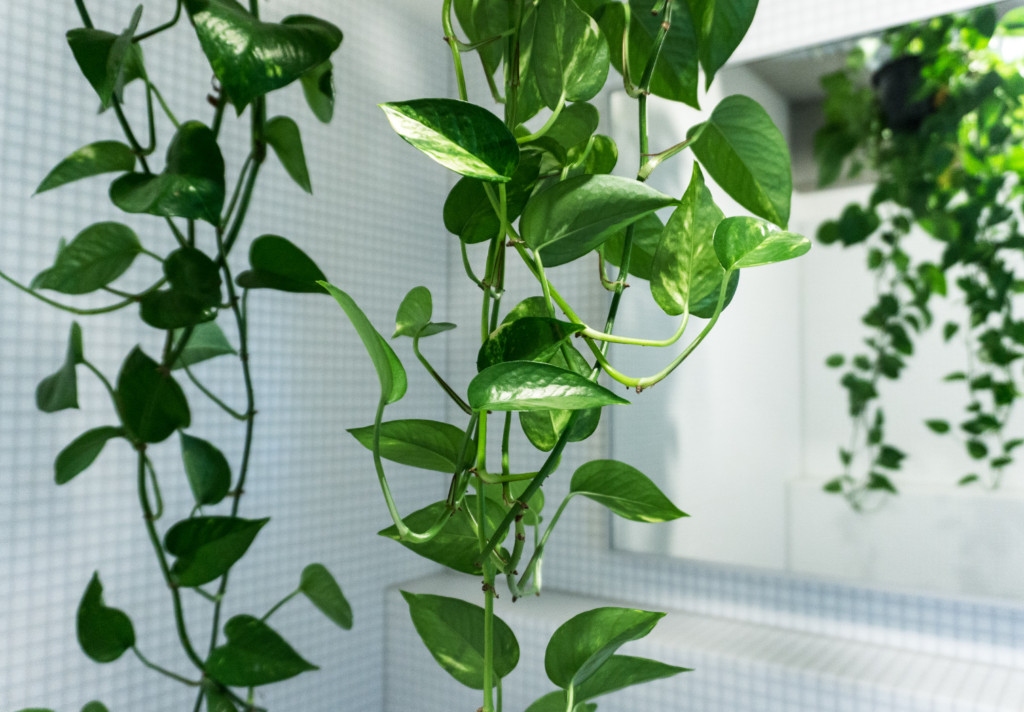 Another easy to grow ivy, the golden pothos absorbs formaldehyde effectively. It can grow easily in cool temperatures. Keep it healthy with bright, indirect light and careful watering. But be careful, as golden pothos is poisonous. It should be kept out of reach of children and pets, ideally as a well trimmed hanging basket.
Another easy to grow ivy, the golden pothos absorbs formaldehyde effectively. It can grow easily in cool temperatures. Keep it healthy with bright, indirect light and careful watering. But be careful, as golden pothos is poisonous. It should be kept out of reach of children and pets, ideally as a well trimmed hanging basket. - Spider plant:
 Spider plants are resilient and beautiful with lots of color and small white flowers. This plant helps to clear benzene, formaldehyde, carbon monoxide, and xylene. It is considered to be safe for pets. It’s easy to maintain and grow, thriving in cool to average home temperatures with dry soil and bright, indirect sunlight.
Spider plants are resilient and beautiful with lots of color and small white flowers. This plant helps to clear benzene, formaldehyde, carbon monoxide, and xylene. It is considered to be safe for pets. It’s easy to maintain and grow, thriving in cool to average home temperatures with dry soil and bright, indirect sunlight. - Philodendron:
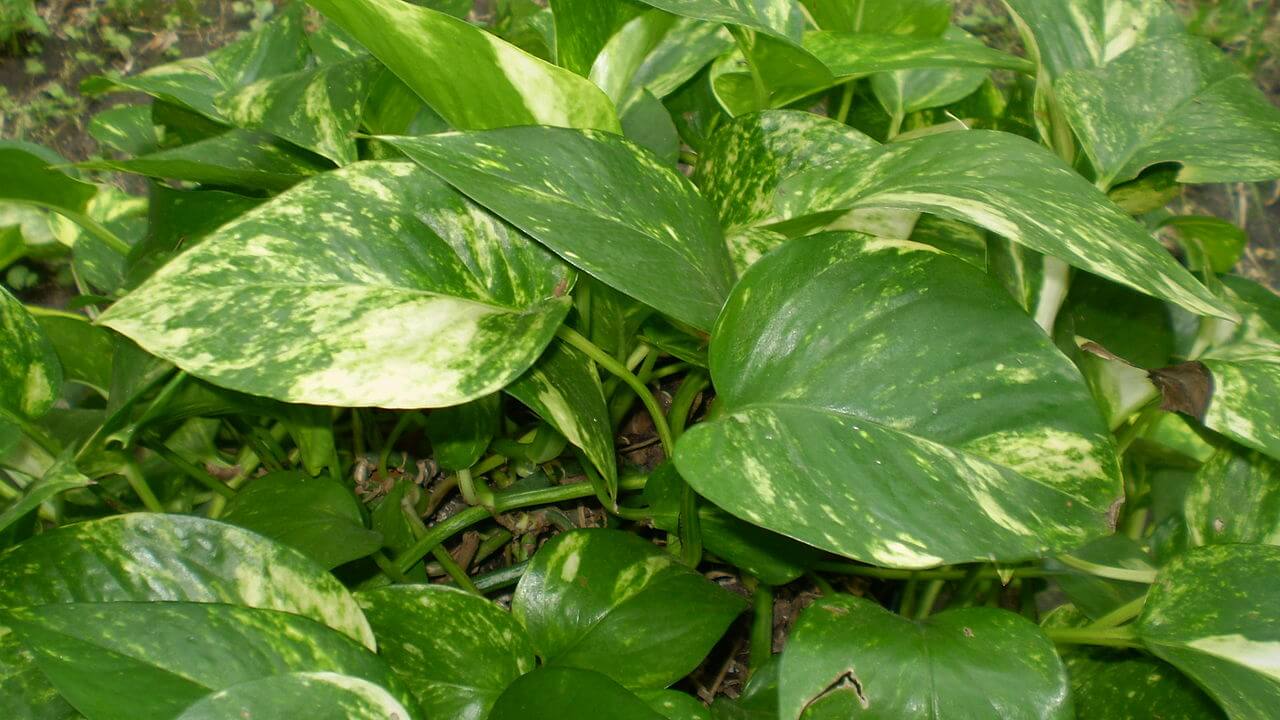 Philodendrons have a decorative, heart shaped vine that’s more than just attractive: it’s useful, too. They are good at removing xylene from the indoor air and only need moderate water and sunlight.
Philodendrons have a decorative, heart shaped vine that’s more than just attractive: it’s useful, too. They are good at removing xylene from the indoor air and only need moderate water and sunlight. - Dracaena:
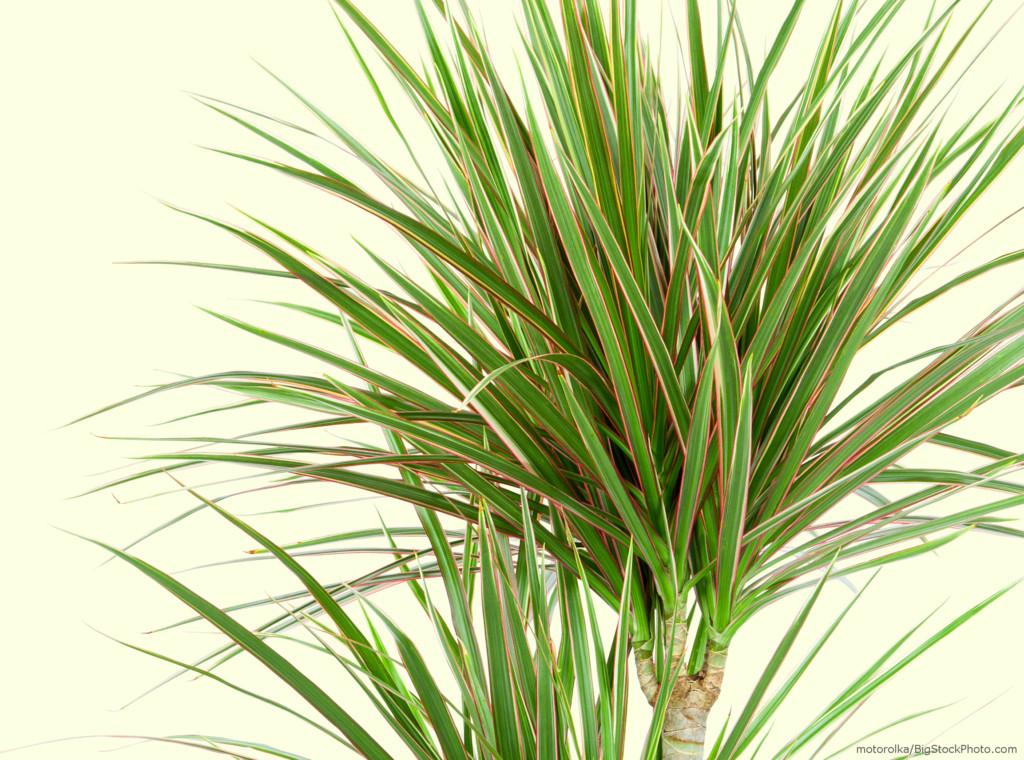 Dracaenas are colorful and can grow very high. It’s known for removing toxins including xylene, trichloroethylene, and formaldehyde from indoor environments. It’s durable and just needs water when the soil becomes dry. The dracaena can grow in low light, but it does best in well lit areas.
Dracaenas are colorful and can grow very high. It’s known for removing toxins including xylene, trichloroethylene, and formaldehyde from indoor environments. It’s durable and just needs water when the soil becomes dry. The dracaena can grow in low light, but it does best in well lit areas. - Snake plant:
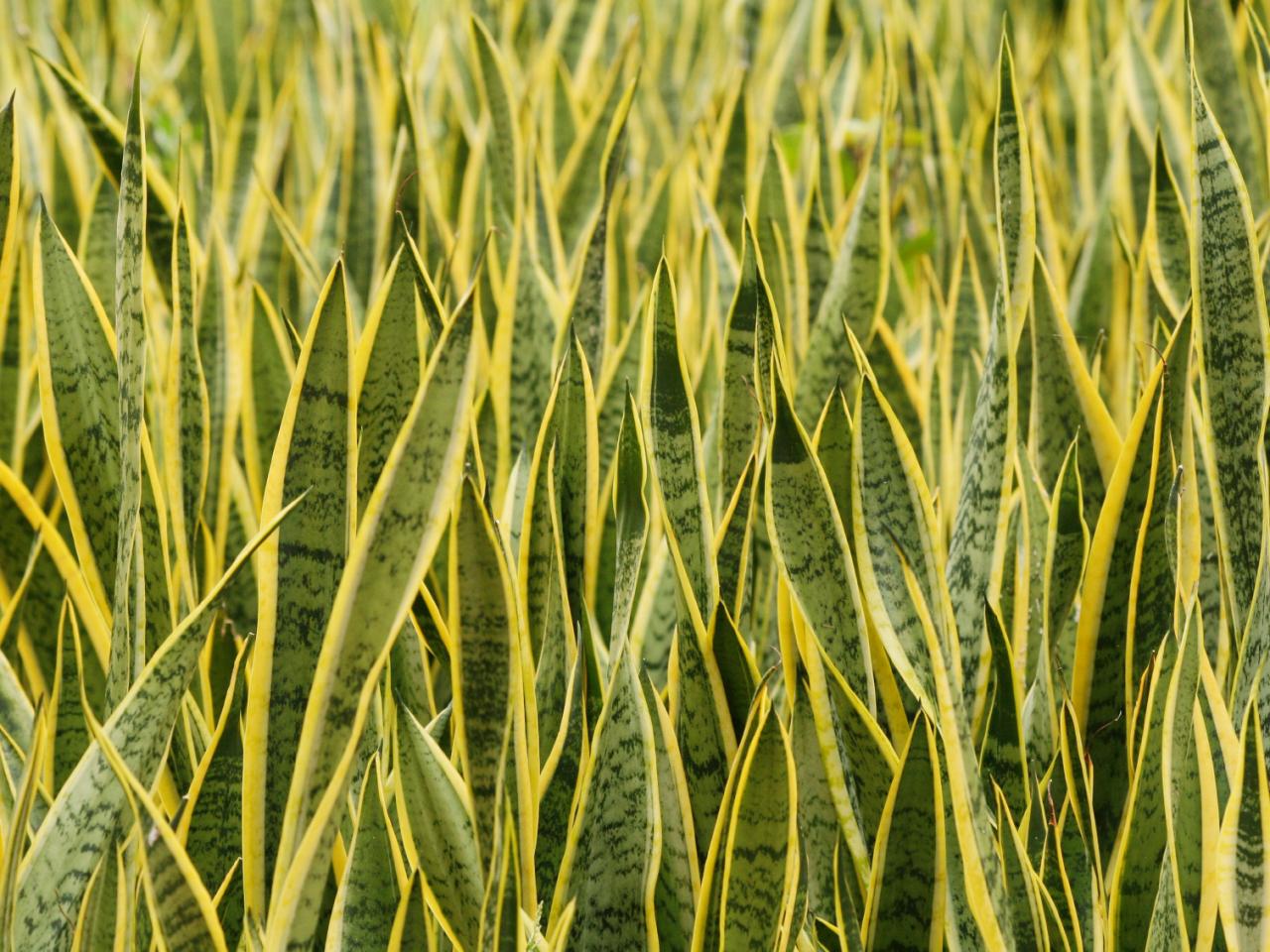 Snake plants do a great job filtering out formaldehyde and absorbing carbon dioxide. They release oxygen at night, so they’re a great choice for bedrooms. Snake plants are also a good choice for bathrooms, as they do well with low light and humid conditions.
Snake plants do a great job filtering out formaldehyde and absorbing carbon dioxide. They release oxygen at night, so they’re a great choice for bedrooms. Snake plants are also a good choice for bathrooms, as they do well with low light and humid conditions. - Chinese evergreen:
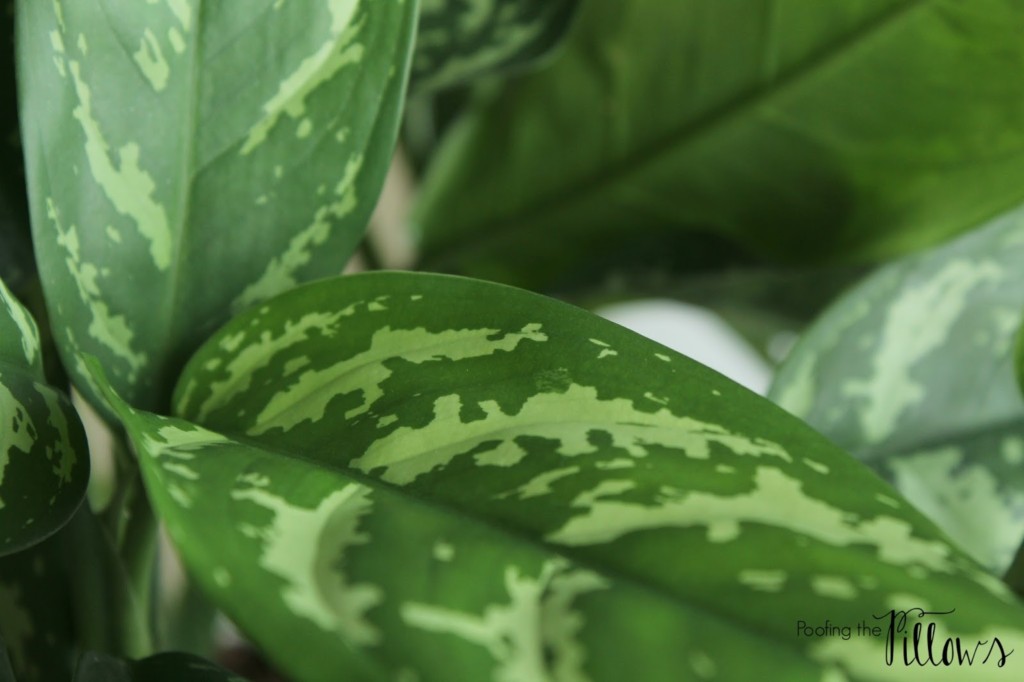 The Chinese evergreen is an easy to care for houseplant. It thrives in low light and grows in areas where many other plants won’t. It is tropical, so it likes humid air, so it may need a light misting every now and then. Care for it well, and the Chinese evergreen will filter out a wide variety of pollutants in the air.
The Chinese evergreen is an easy to care for houseplant. It thrives in low light and grows in areas where many other plants won’t. It is tropical, so it likes humid air, so it may need a light misting every now and then. Care for it well, and the Chinese evergreen will filter out a wide variety of pollutants in the air. - Chrysanthemum:
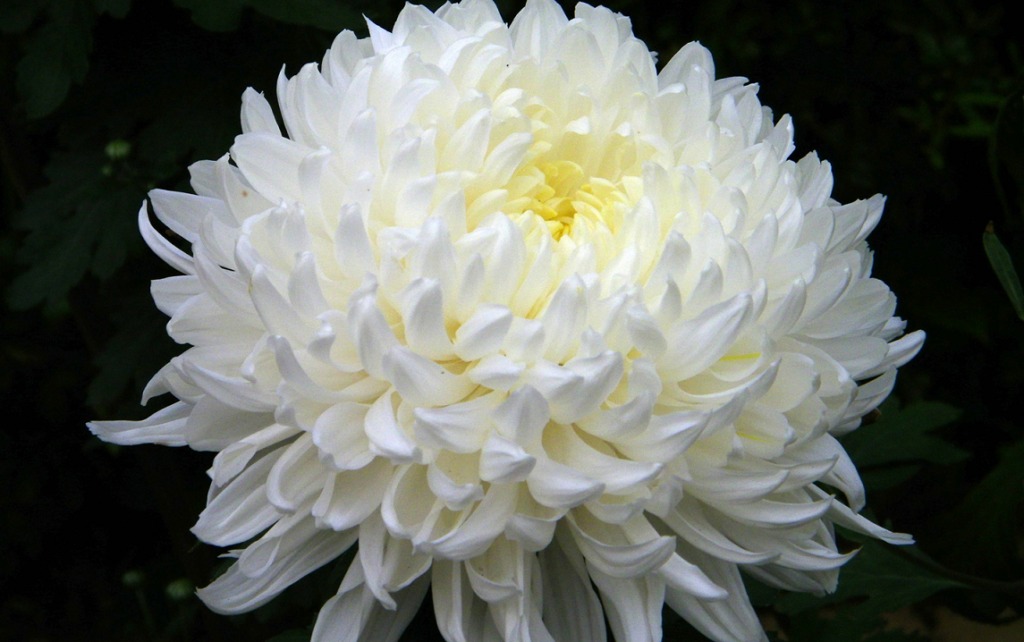 Like the gerbera daisy, chrysanthemums are colorful, beautiful, and can filter the air. Chrysanthemums clear the air of benzene, a chemical often found in detergent, plastics, paint, and glue. Keep it healthy with occasional watering and direct sunlight.
Like the gerbera daisy, chrysanthemums are colorful, beautiful, and can filter the air. Chrysanthemums clear the air of benzene, a chemical often found in detergent, plastics, paint, and glue. Keep it healthy with occasional watering and direct sunlight. - Rubber tree:
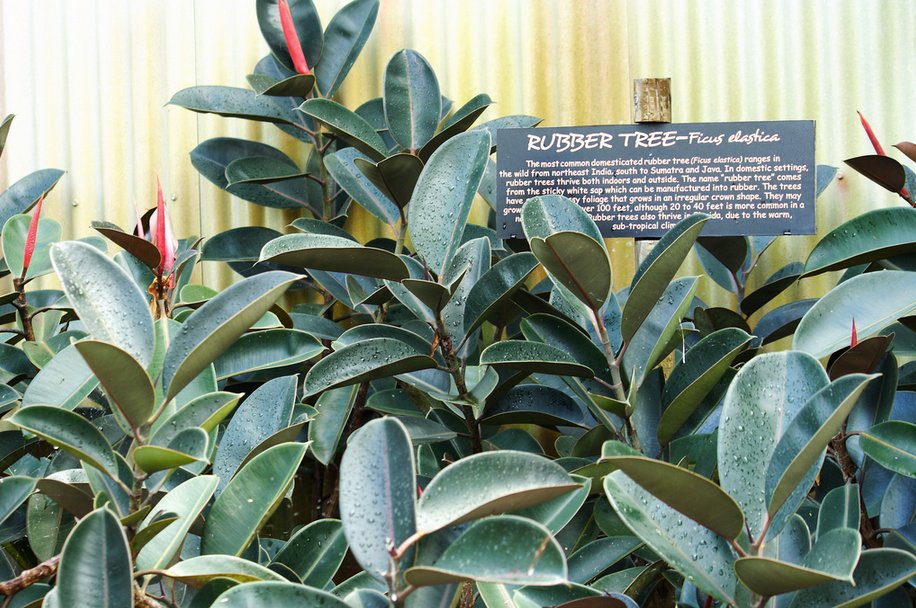 Rubber trees are low maintenance and great for eliminating toxins while purifying the air. They grow up to eight feet in height and have dark, shiny leaves. Water rubber plants occasionally, allowing the mix to dry out before watering again. You should put your rubber tree in medium to bright sunlight.
Rubber trees are low maintenance and great for eliminating toxins while purifying the air. They grow up to eight feet in height and have dark, shiny leaves. Water rubber plants occasionally, allowing the mix to dry out before watering again. You should put your rubber tree in medium to bright sunlight. - Bamboo palm:
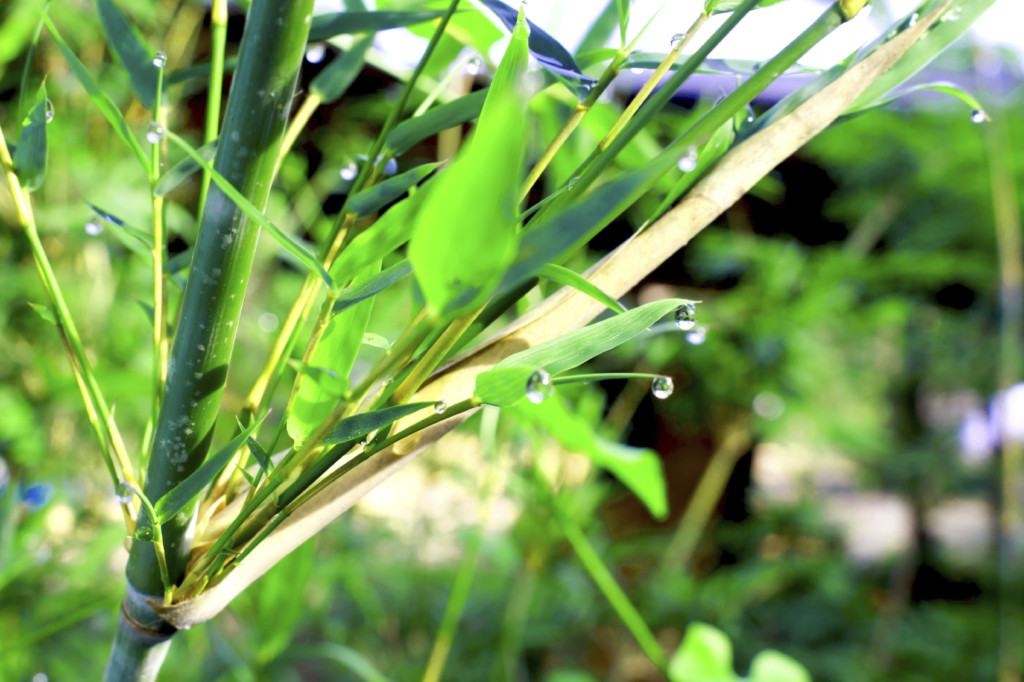 Bamboo palms are particularly skilled at purifying the air, clearing chemicals including benzene and trichlorothylene. This plant thrives in low light conditions, unlike many other tropical indoor plants. Bamboo palms should be watered with room temperature filtered water whenever the soil surface feels dry.
Bamboo palms are particularly skilled at purifying the air, clearing chemicals including benzene and trichlorothylene. This plant thrives in low light conditions, unlike many other tropical indoor plants. Bamboo palms should be watered with room temperature filtered water whenever the soil surface feels dry. - Weeping fig:
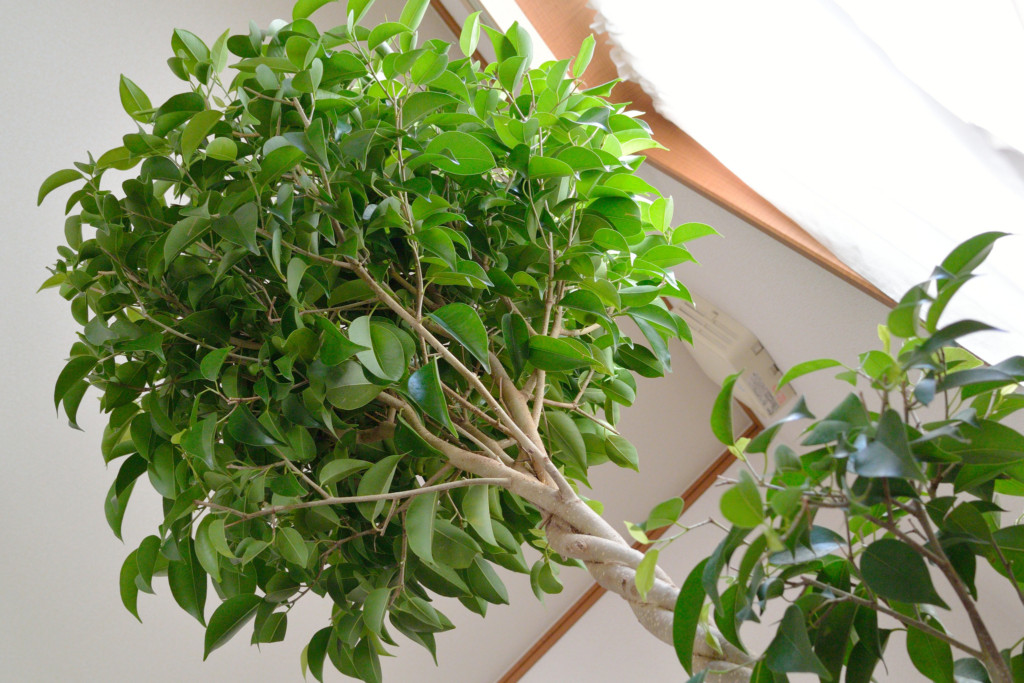 Also known as a ficus, the weeping fig filters out formaldehyde, benzene, and trichloroethylene, chemicals that are often found in furniture and carpeting. Weeping figs like consistent care with bright, indirect light.
Also known as a ficus, the weeping fig filters out formaldehyde, benzene, and trichloroethylene, chemicals that are often found in furniture and carpeting. Weeping figs like consistent care with bright, indirect light. - Azalea:
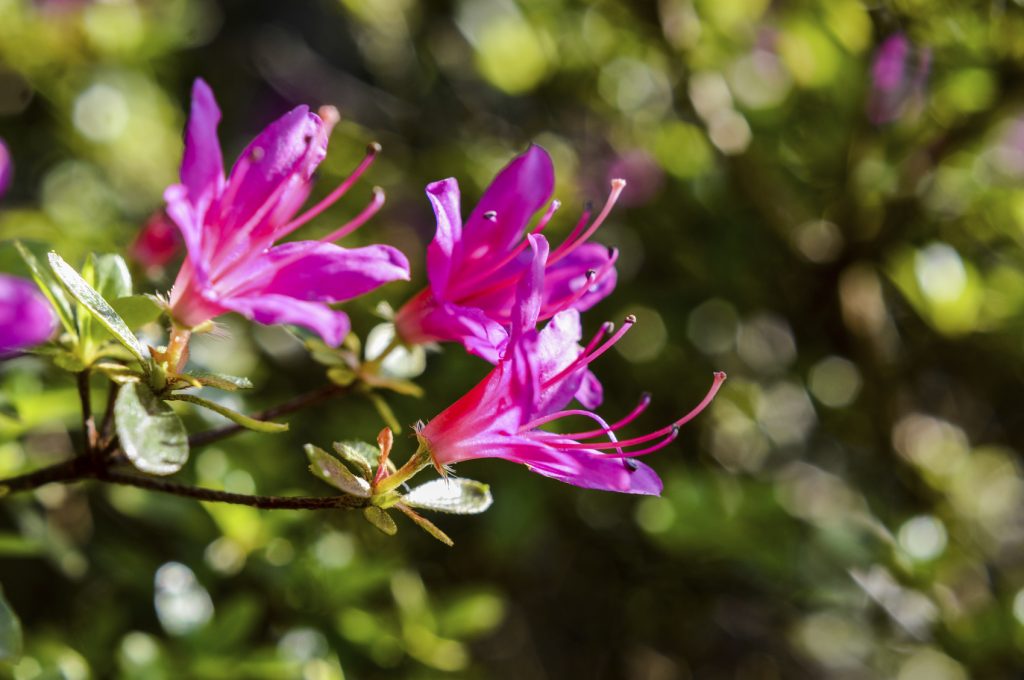 Azaleas are often planted outside, but this colorful flowering shrub is a good choice indoors for its attractiveness and air clearing abilities. This plant clears formaldehyde from the air. It does best in cool areas about 60 to 65 degrees and needs a humid environment, so it may require misting in dry areas.
Azaleas are often planted outside, but this colorful flowering shrub is a good choice indoors for its attractiveness and air clearing abilities. This plant clears formaldehyde from the air. It does best in cool areas about 60 to 65 degrees and needs a humid environment, so it may require misting in dry areas.
The Most Beautiful Houseplants
House plants often get a bad rap as boring leafy numbers stuck in a corner. But house plants can be beautiful, offering gorgeous blooms, vibrantly colored leaves, and more. These house plants are some of the most beautiful ones you can choose.
- Succulents:
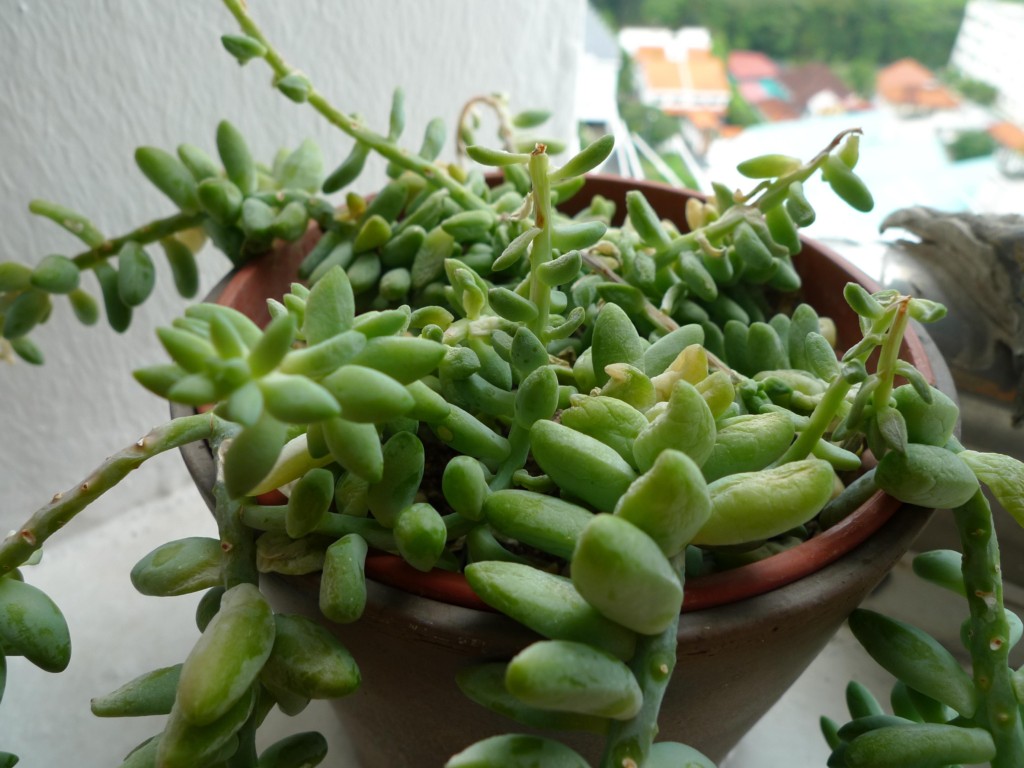 Succulents are colorful and interestingly shaped cousins of the cactus. They typically thrive outdoors, but with special care, they can do well indoors as well. Choose a variety that does well in low light and keep them as close to the window as you can. Succulents don’t need much water and can die from keeping soil wet every day. You’ll just need to let your succulent’s soil dry out completely before you give it water again.
Succulents are colorful and interestingly shaped cousins of the cactus. They typically thrive outdoors, but with special care, they can do well indoors as well. Choose a variety that does well in low light and keep them as close to the window as you can. Succulents don’t need much water and can die from keeping soil wet every day. You’ll just need to let your succulent’s soil dry out completely before you give it water again. - Phalaenopsis orchid:
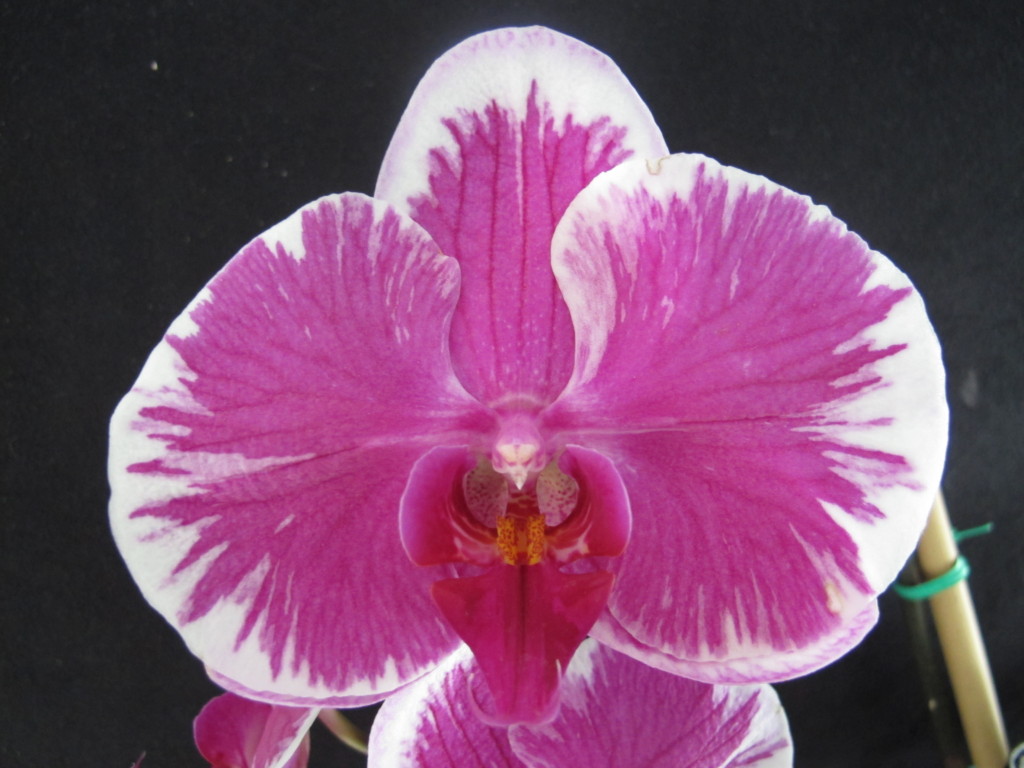 Phalaenopsis orchids have beautiful blooms and are the easiest orchids to grow. They are popular as a potted plant and tend to do well in indoor conditions. They come in a variety of colors including pink, purple, white, yellow, and spotted.
Phalaenopsis orchids have beautiful blooms and are the easiest orchids to grow. They are popular as a potted plant and tend to do well in indoor conditions. They come in a variety of colors including pink, purple, white, yellow, and spotted. - Fuschia:
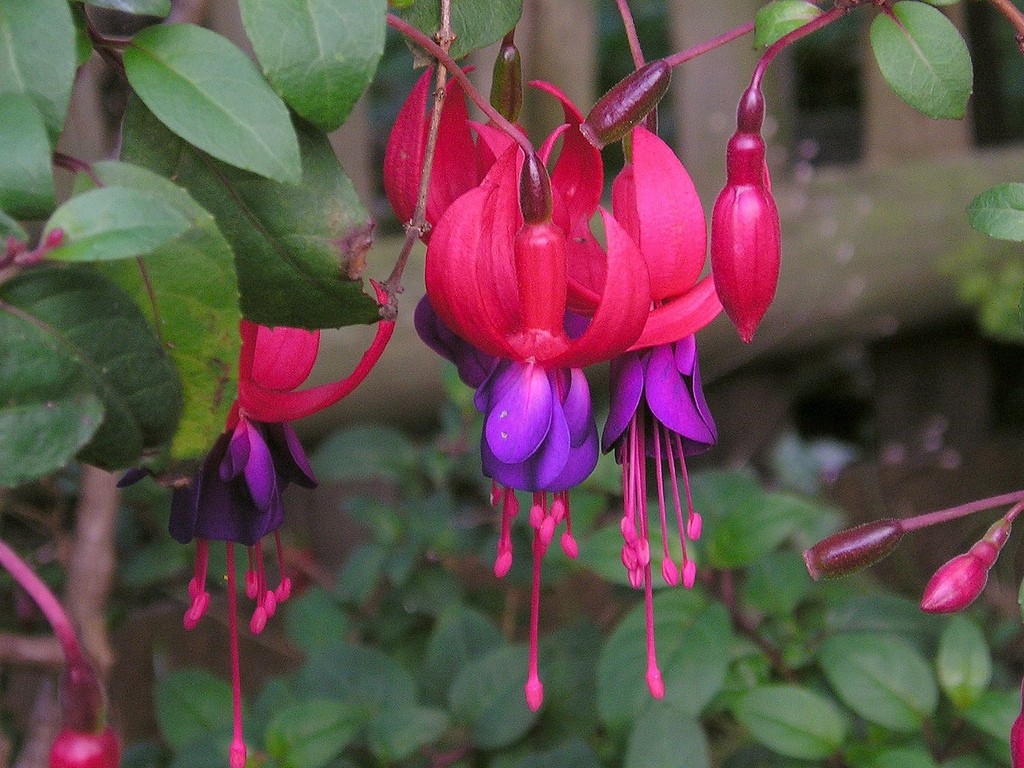 Fuschias, known for their intensely colored blooms, are often grown outdoors in hanging baskets, but this plant can do well indoors with the right conditions, especially if moved indoors for the fall or winter. This plant needs cool rooms during the day and a cooler temperature at night. It will only bloom in temperatures below 75 degrees Fahrenheit. The plant should be watered regularly to keep the soil slightly moist at all times, but never soggy.
Fuschias, known for their intensely colored blooms, are often grown outdoors in hanging baskets, but this plant can do well indoors with the right conditions, especially if moved indoors for the fall or winter. This plant needs cool rooms during the day and a cooler temperature at night. It will only bloom in temperatures below 75 degrees Fahrenheit. The plant should be watered regularly to keep the soil slightly moist at all times, but never soggy. - Wandering jew:
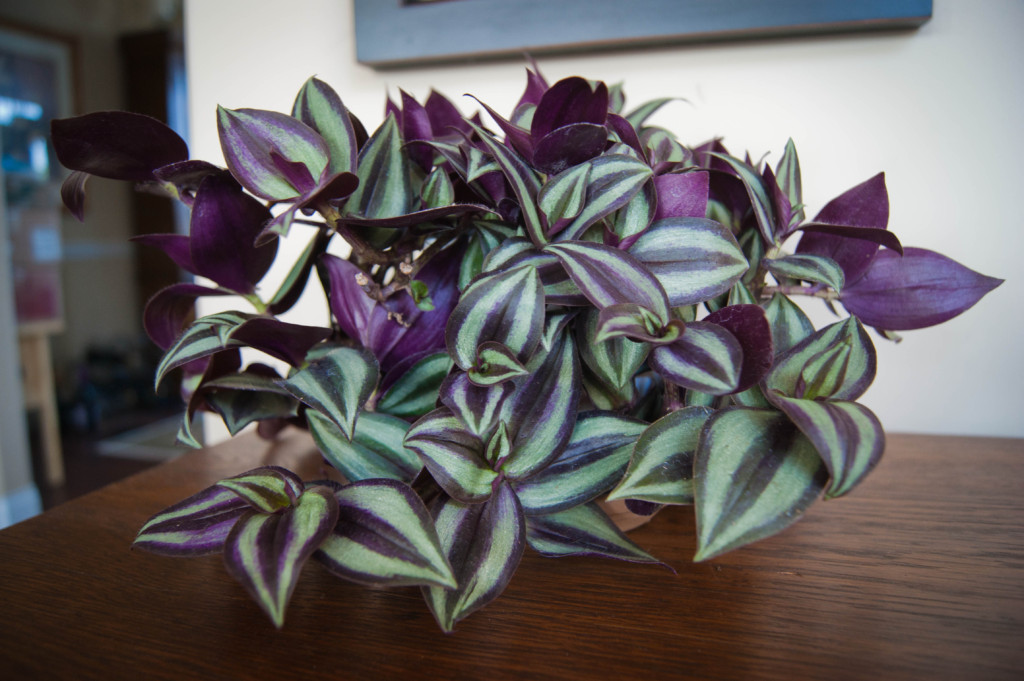 Wandering jews have a beautiful green and purple striped flower. And they are hardy and love to spread, so they grow very well even indoors. This plant prefers full sun. In fact, the more sun it gets, the more purple you will see in its leaves.
Wandering jews have a beautiful green and purple striped flower. And they are hardy and love to spread, so they grow very well even indoors. This plant prefers full sun. In fact, the more sun it gets, the more purple you will see in its leaves.
Best Houseplants That Are Safe for Animals and Children
While house plants can add beauty, charm, and even health benefits to your home, they can be dangerous. Children and pets may come into contact with house plants, potentially ingesting them and becoming ill. If you have pets or small children, these non toxic house plants are the safest choice.
- Boston fern:
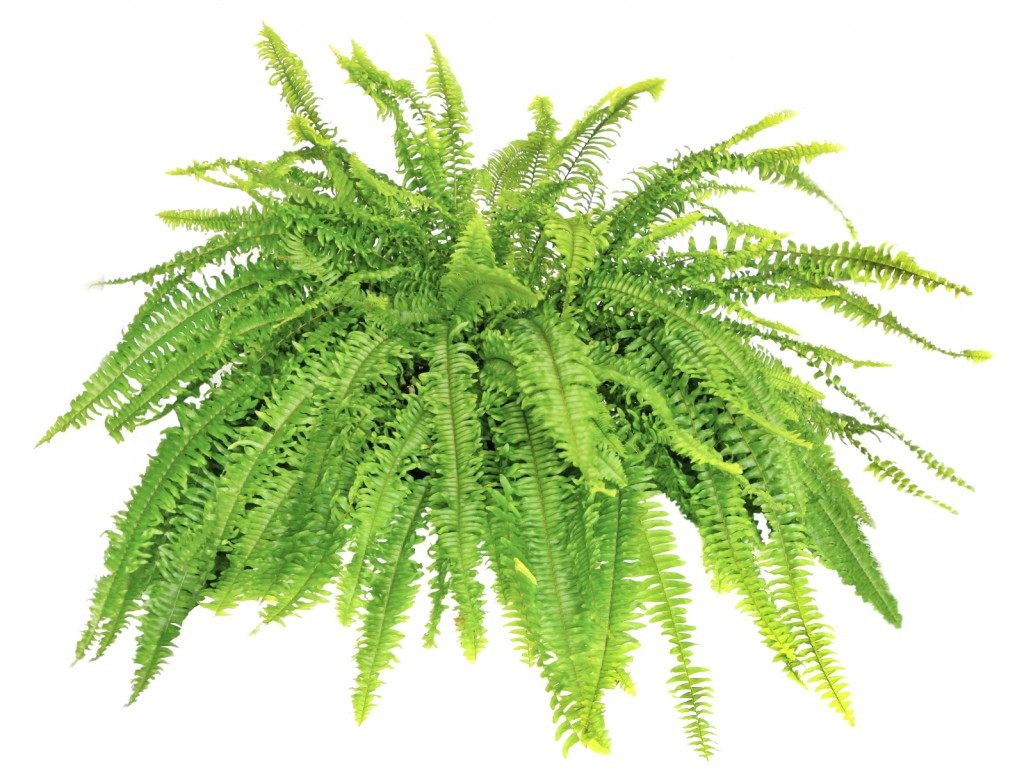 The Boston fern is one of the most popular house plants for its distinctive foliage and simple care. It is easy to care for when given a cool place with high humidity and indirect light. Most Boston ferns do well when set in a pot on top of a tray of pebbles filled with water. Misting Boston ferns one to two times a week helps with humidity as well.
The Boston fern is one of the most popular house plants for its distinctive foliage and simple care. It is easy to care for when given a cool place with high humidity and indirect light. Most Boston ferns do well when set in a pot on top of a tray of pebbles filled with water. Misting Boston ferns one to two times a week helps with humidity as well. - African violet:
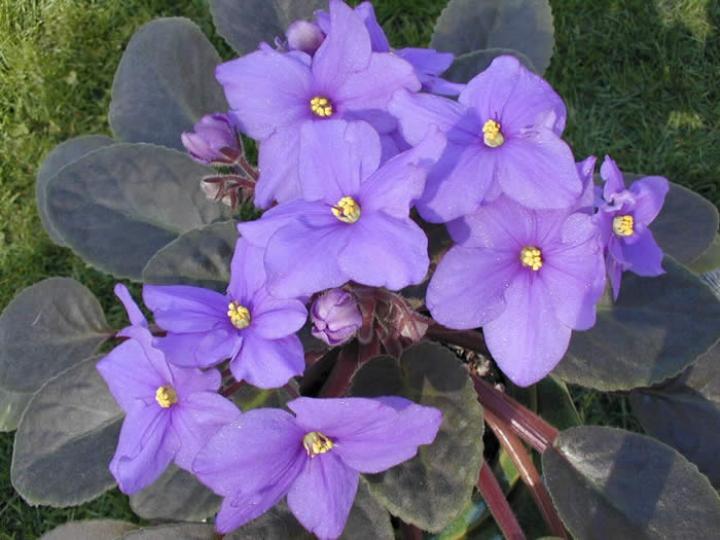 African violets offer beautiful fuzzy green leaves and the potential to bloom year round indoors. They come in a variety of colors including lavender, blue, pink, red, and white, with some combined into double colors and variegated. While they are particular to care for, they are not necessarily difficult. African violets should be watered when soil feels like it’s losing moisture — and take care not to splash the foliage, as this can cause spots and damage. They should not be allowed to completely dry out or stay standing in water. Often, owners of African violets choose to use wick watering pots that allow the plant to take water when needed without sitting in moisture. This plant needs indirect light, with higher light levels for varieties with dark green foliage.
African violets offer beautiful fuzzy green leaves and the potential to bloom year round indoors. They come in a variety of colors including lavender, blue, pink, red, and white, with some combined into double colors and variegated. While they are particular to care for, they are not necessarily difficult. African violets should be watered when soil feels like it’s losing moisture — and take care not to splash the foliage, as this can cause spots and damage. They should not be allowed to completely dry out or stay standing in water. Often, owners of African violets choose to use wick watering pots that allow the plant to take water when needed without sitting in moisture. This plant needs indirect light, with higher light levels for varieties with dark green foliage. - Purple velvet plant:
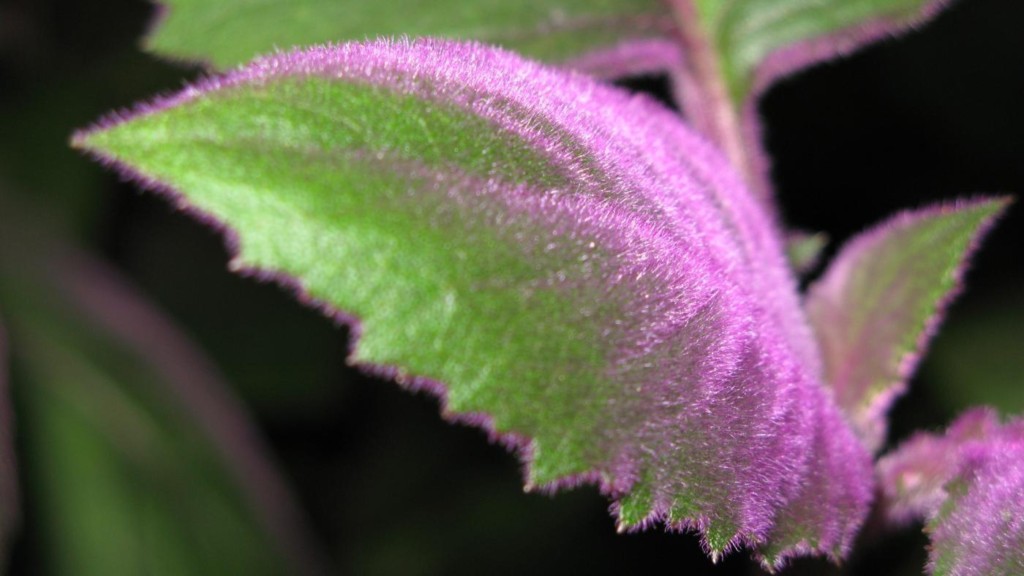 Marked with soft, purple hairs, the purple velvet plant actually has green leaves. In the spring and summer, it blooms clustered orange flowers for another pop of brightness. This plant needs bright indirect sunlight and a moderate amount of watering. The plant will tell you when it’s dry by wilting.
Marked with soft, purple hairs, the purple velvet plant actually has green leaves. In the spring and summer, it blooms clustered orange flowers for another pop of brightness. This plant needs bright indirect sunlight and a moderate amount of watering. The plant will tell you when it’s dry by wilting. - Cast iron plant:
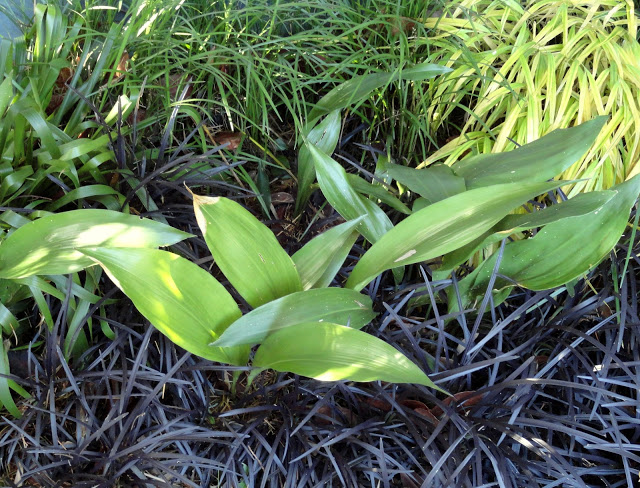 This extremely hardy houseplant is great for those who don’t have a lot of time to dedicate to care. It doesn’t need regular water and grows well in low light indoors. It has small purple flowers that appear at the soil surface and healthy dark green leaves.
This extremely hardy houseplant is great for those who don’t have a lot of time to dedicate to care. It doesn’t need regular water and grows well in low light indoors. It has small purple flowers that appear at the soil surface and healthy dark green leaves. - Prayer plant:
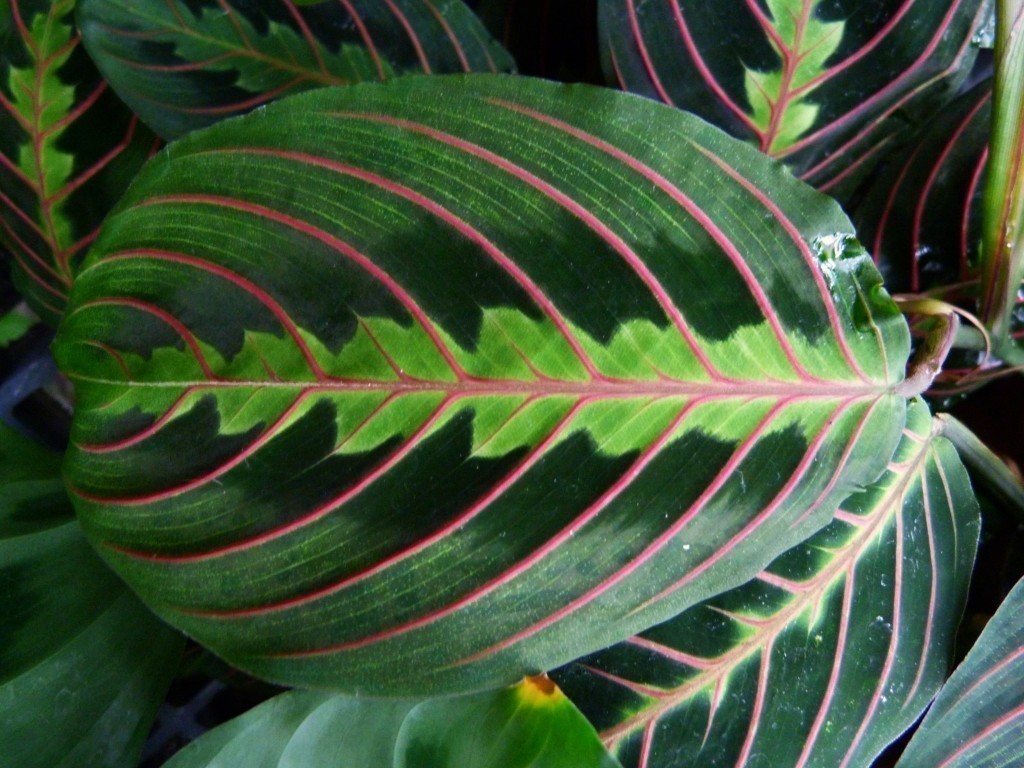 Prayer plants are easy to grow as long as you meet their needs. They do well in bright indirect sunlight with well drained soil and high humidity. It’s important to keep this plant moist, but avoid keeping the soil soggy and let the soil dry out a bit in the winter, misting the leaves instead.
Prayer plants are easy to grow as long as you meet their needs. They do well in bright indirect sunlight with well drained soil and high humidity. It’s important to keep this plant moist, but avoid keeping the soil soggy and let the soil dry out a bit in the winter, misting the leaves instead. - Gardenia:

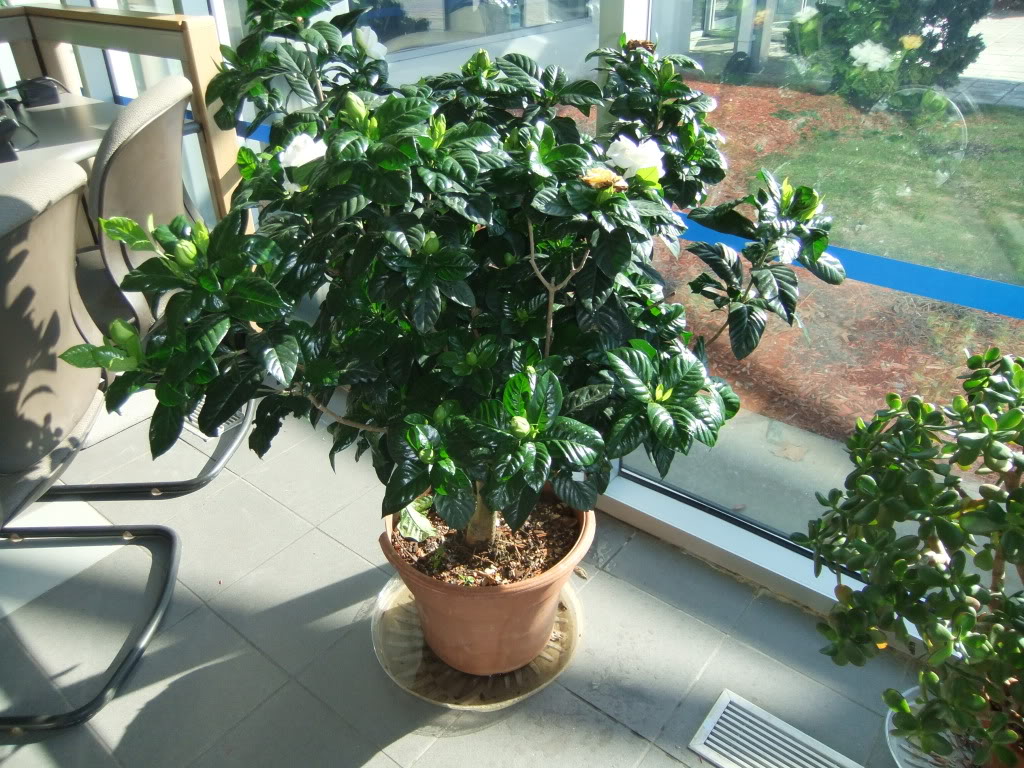 Gardenias have intensely fragrant blooms and do well as indoor house plants. They need good sunlight, an acidic fertilizer, and cool nights, but warm days. They need moderate watering, but are easily susceptible to root rot, so be careful not to over water.
Gardenias have intensely fragrant blooms and do well as indoor house plants. They need good sunlight, an acidic fertilizer, and cool nights, but warm days. They need moderate watering, but are easily susceptible to root rot, so be careful not to over water. - Flame violet:
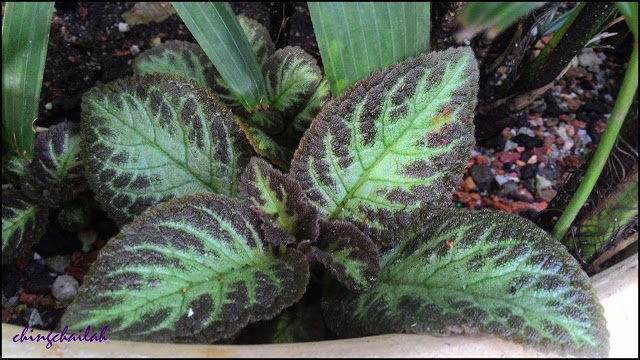 The flame violet has rosette leaves in shades of green and coppery brown. In the spring through the fall, the flame violet puts out bright red, orange, pink, or yellow flowers. Flame violets need to be placed near a window with indirect sunlight. High humidity is needed, so it’s a good idea to mist this plant’s leaves regularly.
The flame violet has rosette leaves in shades of green and coppery brown. In the spring through the fall, the flame violet puts out bright red, orange, pink, or yellow flowers. Flame violets need to be placed near a window with indirect sunlight. High humidity is needed, so it’s a good idea to mist this plant’s leaves regularly.
